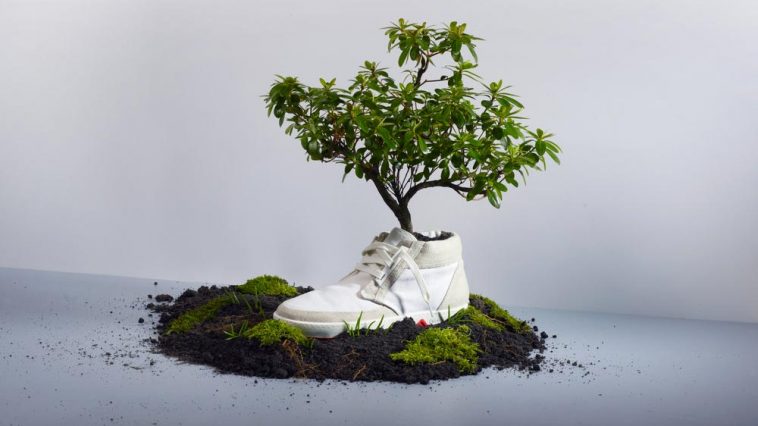Footwear is an important focus point—shoes make up a huge percentage of plastic waste in the world’s waters and landfills, and plastic-based flip-flops are the world’s most popular shoe.
Currently, plastic polluting our seas never degrade and instead breaks up into smaller particles until they become microplastics that live on for centuries.
But an interdisciplinary team at the University of California San Diego has created materials that start to degrade after just four weeks. “No single discipline can address these universal environmental problems, but we’ve developed an integrated solution that works on land—and now we know also biodegrades in the ocean,” said UC San Diego biologist Stephen Mayfield, who worked on the study. Mayfield is also CEO of the compostable sneaker company Blueview.
To test their new creation in the water, the group met up in an aquarium with the marine biologist and scientific diver Samantha Clements at Scripps Institution of Oceanography.
They took biodegradable polyurethane materials that they had previously developed to biodegrade in land-based composts—which have already been turned into the first biodegradable shoes.
The group discovered all sorts of marine organisms colonized on the polyurethane foam and biodegrade the material back to their original chemicals, which are then consumed as nutrients by the same microorganisms in the ocean.
“I was surprised to see just how many organisms colonize these foams in the ocean. It becomes something like a microbial reef,” Mayfield added.
“Plastics should not be going into the ocean in the first place, but if they do, this material becomes food for microorganisms and not plastic trash and microplastics that harm aquatic life.”
The group of experts from biology, polymer sciences, synthetic chemistry, and marine sciences tracked the samples and found the material began to degrade after just four weeks in the sea.
After that, the researchers identified the microorganisms from six sites across San Diego that are capable of breaking down and eating the material.
In 2010, researchers estimated that 17 billion lbs of plastic end up in the ocean each year, and a steep rise is predicted by 2025.
When it enters the water, plastic waste disrupts marine ecosystems and migrates together to form giant mounds of trash, such as the 0.6 million square miles Great Pacific Garbage Patch.




GIPHY App Key not set. Please check settings